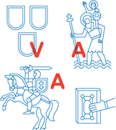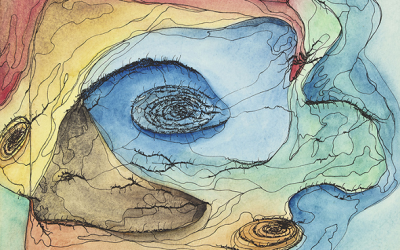18th April, 14.00 Ieva Baltrėnaitė-Markevičė, doctoral student in design, will defend her art project "The Secrets of the (Un)Processed Collection: Reflection, Interpretation and Contexts of Lithuanian Women‘s Everyday Clothing in 1940‘s–1970‘s" (Design V 003) at the project space of the Union of Lithuanian Artists (Vokiečių st. 2, 01130 Vilnius).
Art Project Supervision
Prof. Eglė Ganda Bogdanienė
Vilnius Academy of Arts, Visual Arts, Fine Arts V 002
Thesis Supervision
Prof. Dr. (hp) Giedrė Jankeviciutė
Vilnius Academy of Arts, Humanities, Art History and Theory H 003
Consultant
Prof. Laura Stasiulytė-Gudaitė
Vilnius Academy of Arts, Visual Arts, Fine Arts V 002
The Artistic Research Project will be defended at a public meeting of the Academic Board of Design at Vilnius Academy of Arts composed of the following members:
Chairperson
Prof. Jolanta Talaikytė
Vilnius Academy of Arts, Visual Arts, Design V003
Members
Prof. Barbara Ābele (Art Academy of Latvia, Visual Arts, Design V 003)
Dr. Karolina Jakaitė (Vilnius Academy of Arts, Humanities, Art History and Theory H 003)
Prof. Laima Oržekauskienė (Vilnius Academy of Arts, Visual Arts, Fine Arts V 002)
Assoc. Prof. Dr. Tomas Vaiseta (Vilnius University, Humanities, History H 005)
Abstract
Ieva Baltrėnaitė-Markevičė's five year artistic project focuses on Lithuanian women's clothing and their stories from the period between 1940‘s to 1970‘s. The self-made clothing garments testify to the fateful events of the 20th century that took place in their background: the World War and the Partisan War, which suddenly and irreversibly changed the fabric of the society. These tragedies were accompanied by massive population shifts caused by the Holocaust, deportations to Stalin's Gulag, the flee to the West at the end of the war, the repatriation of Germans and Polish, the rural-urban migration, and the flow of emigrants from the USSR.
The histories of Lithuanian women's clothing from that period are particularly unique, and the clothing garments themselves in their materiality, the circumstances of their origin and their later life, tell the story of the people who wore them and the history of their domestic life at that time. The Secrets of the (Un)Processed Collection speak of a time when, despite hardship and deprivation as well as the scarcity of objects and materials, people still adorned themselves with what was available to them at the time – imagination and creativity. This is reflected and visible in a wedding dress made from bright blue fabric brought back from the exile in Siberia, a graduation dress made from the lining of an American man's suit, or a dress worn for all the occasions for almost forty years, which has not worn out to these days. The collection consists of twenty four women's dresses, three suits, one blouse, one skirt, one coat, three shoes, one pair of winter boots, four fashion magazines, one children's christening set, one children's dress, one scarf, one knitted scarf, one notebook with hand-drawn patterns, and three knitted garments of uncertain function.
The project is accompanied by the research on women of a Lithuanian origin living in France between 1940‘s–1970‘s and their clothing, a case study of Žemaitė and creative projects. The whole artistic project is structured by the Detective Wall, which visually groups the research process and results. The author's lively narration helps to unravel the meanings of the chronological sequences presented on the walls.
Credits: Veronika Žukauskaites-Balandienes blouse from the early 1960s. Photo by Saulė Barley, 2022







